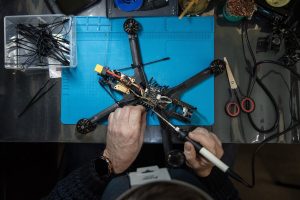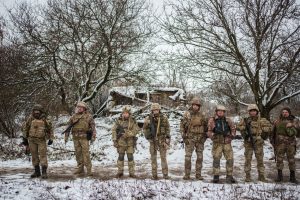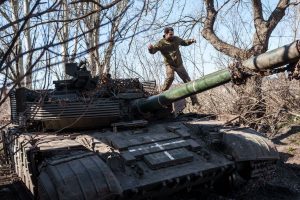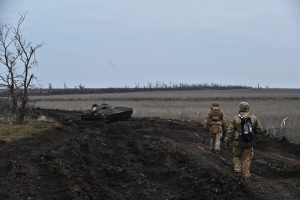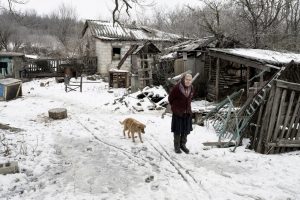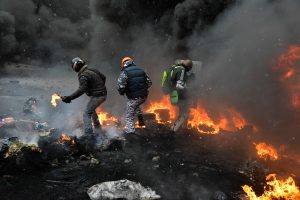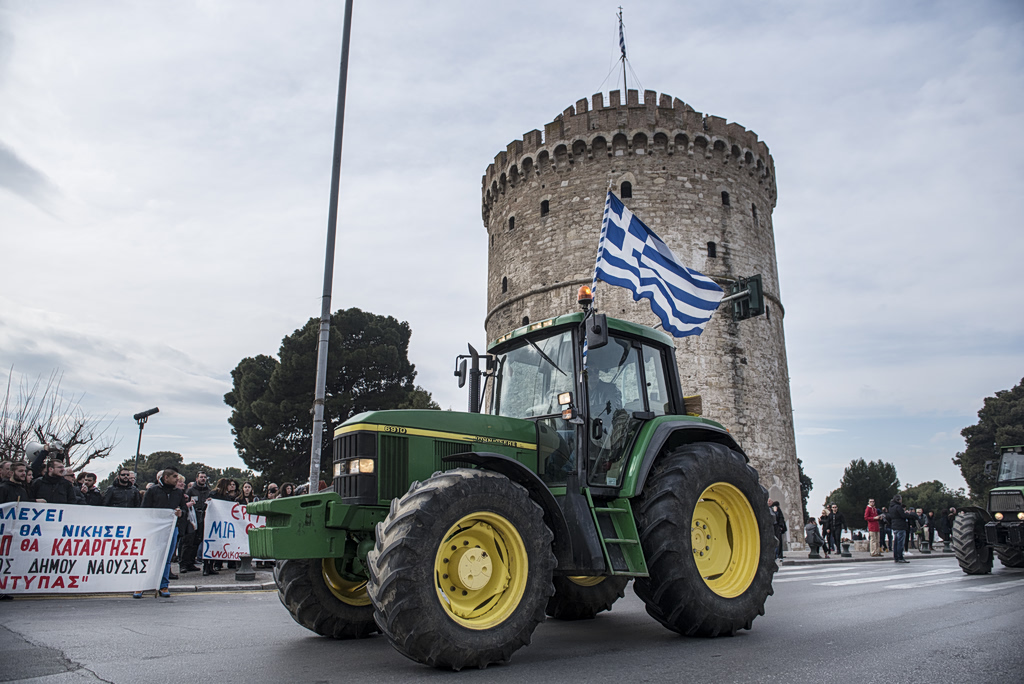KAMYANKA, Ukraine—At the edge of a stream in this decimated village, Max Polyukhovich dug through the mud with his hands in search of an elusive grail. After a few moments, he pulled out a smooth gray hunk of metal, several feet long: an unused Russian artillery shell.
Ukraine is so short on ammunition that Polyukhovich, a 36-year-old soldier, has become an important source of shells for brigades across the eastern front.
Weapons deliveries from the U.S. are held up in Congress , and the shortage has driven Kyiv to resort to shoestring solutions—such as explosive drones and leftover Russian shells—to try to hold back Moscow’s forces.
Part scavenger, part backyard bomb-maker, Polyukhovich has dived into swamps and hiked for miles through minefields in search of the unused munitions Russian troops left behind when they retreated. Some of what he finds can be fired by Ukraine’s artillery right away; some of it he takes back to his makeshift laboratory, where he reshapes the explosive into ammunition for attack drones.
Known by the call sign “Mad Max,” he has supplied at least 14,000 shells to brigades across Ukraine’s east, plus 4,000 munitions for aerial drones to drop on Russian troops and vehicles, he estimates.
“Commanders’ appetite is increasing,” he said. “If I send 100 rounds, they call the next day asking for more ammo.”
Officers in Ukraine’s 92nd Assault Brigade , which is fighting around the destroyed eastern village of Andriivka, said the shortage of artillery shells is so critical that even when drones spot Russian targets, the brigade can’t always fire at them.
“If the Russians made a large-scale attack later, we’d be out of shells,” said a major from the brigade, who goes by the call sign Angel. “We’re in constant economy mode.”
Though Polyukhovich’s contributions help, they can’t compensate entirely for Kyiv’s huge deficit in shells, with commanders estimating Russia fires around five times as many a day.
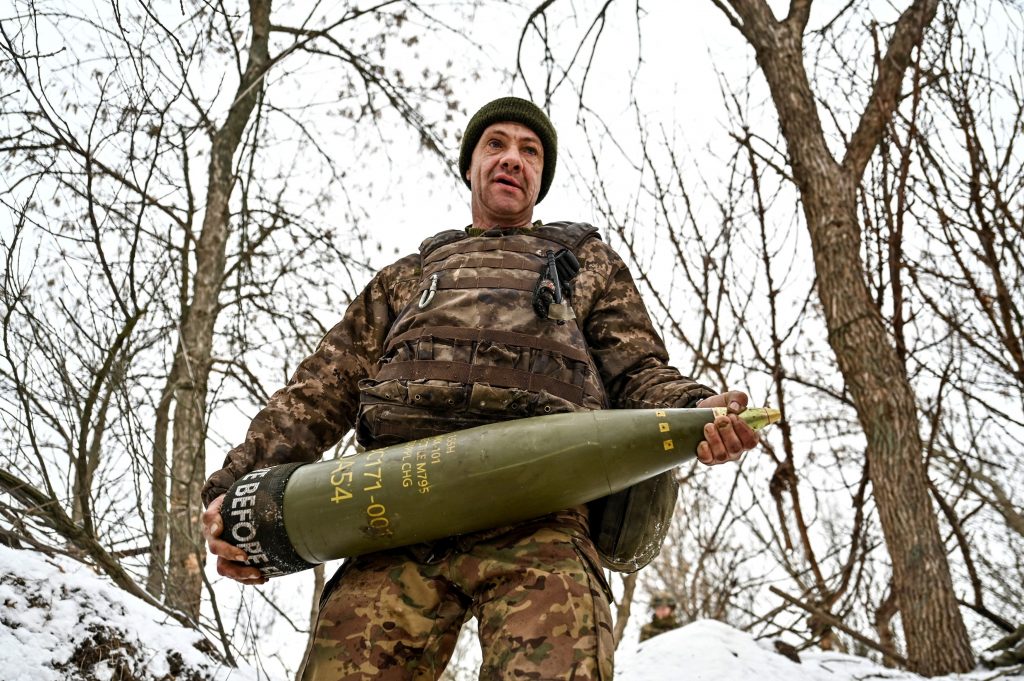
A Ukrainian serviceman carries a 155mm artillery shell at a position near a front line, amid Russia’s attack on Ukraine, in Zaporizhzhia region, Ukraine January 14, 2024. REUTERS/Stringer/File Photo
A hulking figure, with an unruly dark beard and bright green eyes, Polyukhovich has been fighting for eight years in eastern Ukraine, where the war has been raging since the covert Russian invasion in 2014.
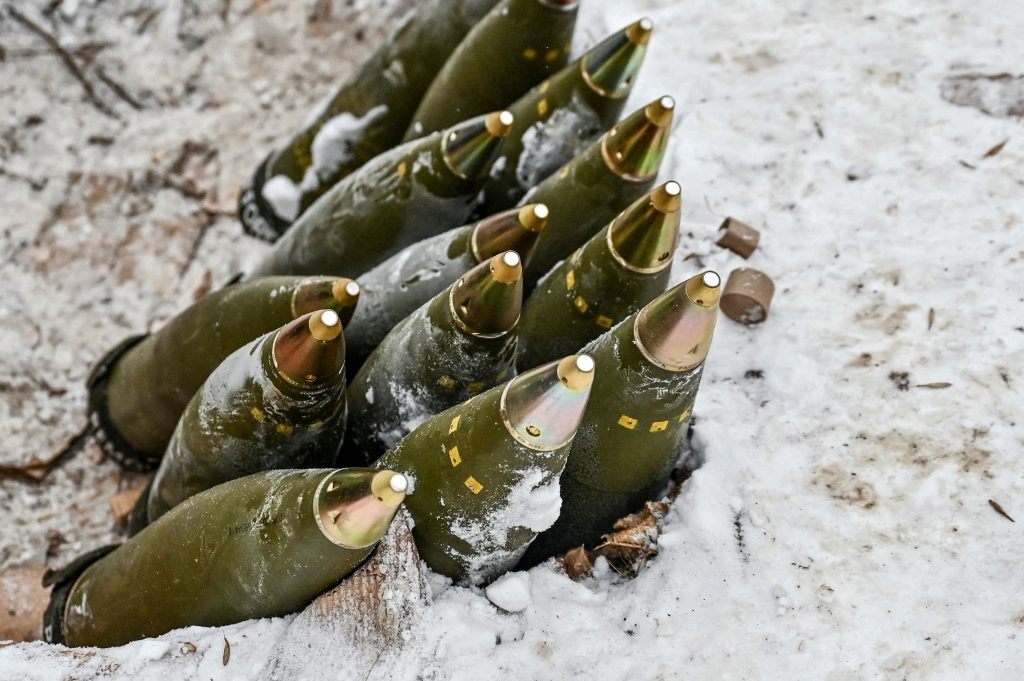
155mm artillery shells are placed in a pile at a position of Ukrainian servicemen near a front line, amid Russia’s attack on Ukraine, in Zaporizhzhia region, Ukraine January 14, 2024. REUTERS/Stringer/
Though he worked mostly as a de-miner, he sometimes joined assaults in the first year of the full-scale war, which began in February 2022. Then, last summer, he was shot. His body armor saved him from major injury, and he saw the growing hunger for shells during his recovery. Since then, he has turned finding and making ammunition into his full-time job.
He concentrates his searches on areas that Moscow occupied early in the war. Just from the swamps around Izyum, in the northeastern Kharkiv region, he said he has recovered 2,500 usable shells, which the Russians dumped into the water before fleeing in September 2022, when Ukraine retook the area during a lightning offensive .
“If you liberate an area, you should check the swamps,” Polyukhovich said , noting that this was a common strategy Russians used to try to prevent the Ukrainians from using their ammunition.
The water didn’t damage the shells, he said. But if he finds even a tiny ding on the body of one, he throws it away. The dent could change the shell’s trajectory, putting artillery teams at risk of accidentally hitting their own troops.
On a recent afternoon, The Wall Street Journal accompanied Polyukhovich to Kamyanka, a village in the Kharkiv region, where Russian forces had set up several artillery positions early in the war. The roofs on all but a few homes had been blown out. Only a handful of locals remained in town.
Polyukhovich had already made dozens of trips to the village, searching every home and recovering about 1,000 shells.
When he arrived, two local women greeted him with a plate of meat-filled pancakes. “I found something near the stream,” one of the women, Svitlana Kordyenko, said. “Go look.”
Wooden boxes used to transport shells littered the bank. Polyukhovich soon pulled a shell out of the mud.
But he was looking for a larger bounty—the sites where Russian forces kept their shells during the occupation. From talking to locals, he knew the Russians had three artillery positions in the area.
“There have to be more shells,” he said. “Given the amount of artillery guns they had, there should be 10,000 shells in this village.”
In a field, near one of the artillery positions, he found a few wooden planks in the ground.
“There could be more underneath,” he said. He decided he would need to come back with excavating equipment to look.
After searching Kamyanka, Polyukhovich headed back to his laboratory. His wife lives not far from the village, but he said he didn’t have time to visit her. He had seen her only a few times since the full-scale war began. His ex-wife and son have left the country—he’s not sure where they are.
During his last vacation, he spent one of his two days off looking for shells.
“How can I explain to my wife that she’s not the most important thing for me right now?” he said.
Officers from the 92nd Brigade said Polyukhovich had supplied them with more than 8,000 shells. Still, Polyukhovich’s stocks don’t compensate for the drop in deliveries from the West. Ukrainian forces are now firing about 2,000 shells a day, down sharply from last summer.
Polyukhovich mostly finds 152mm caliber shells, which work with Soviet-era artillery guns. Ukraine is also increasing its production of 152mm ammunition, the officers said.
But the brigade’s Western artillery pieces take 155mm shells, and the supply of such ammunition from abroad has dwindled.
“The problem is we have three times more 155-caliber pieces than 152-caliber,” Angel said, adding that the 155mm shells were also more accurate. As a result, most of the brigade’s guns are sitting idle.
In addition to searching for Russian shells, Polyukhovich has set up an operation to make bombs for drones, which have become increasingly important in recent months , as Western ammunition has been depleted.
Polyukhovich is usually up by 4 a.m. “I don’t sleep well,” he said, adding that when he does doze off, “I see the horrible things I’ve witnessed in this war.”
Before dawn, he often drives toward the front line, then walks into the no man’s land between Ukrainian and Russian positions.
He carefully steps through the fields, disarming Russian antitank mines and taking them with him. By the time the sun is fully up, he is bringing the loot to his lab.
“Max” is scrawled on the rusted gate outside Polyukhovich’s compound, along with a spray-painted skull and crossbones. In the courtyard, he steps around piles of antitank mines and artillery shells. He sleeps in one of the houses. The other he has turned into a bomb factory.
He cuts open the antitank mines and empties the explosive powder into slow cookers. A mask of Guy Fawkes, who plotted to blow up the English Parliament in the 17th century, hangs from a beam above.
“I’m the head chef here,” he said.
Once the explosive is liquefied, he and a few assistants pour it into homemade shells. He held up one of his creations: a plastic sheath, filled with explosive and duct-taped to a ball of shrapnel, which a drone could drop onto infantry.
“These bastards cover my motherland with their f—ing mines,” Polyukhovich said. “We collect them, reassemble them, and then send them back.”
As the shortage of artillery shells has grown more acute in recent weeks, brigades have started sending their de-miners to Polyukhovich, hoping he’ll teach them how to find more ammunition.
It is dangerous work. Several months ago, while Polyukhovich was out, his team tried to deactivate an antipersonnel mine, which is more sensitive than the antitank mines they normally work with. It went off, killing one of them and pockmarking the side of Polyukhovich’s house.
“I’ve become the kind of person who can’t comfort someone as he’s dying,” Polyukhovich said. “I prefer to just turn away. It’s impossible to forget the eyes of a dying person.”
For now, he has taken on one protégé, a 40-year-old sergeant who goes by the call sign Tikhy, meaning quiet. He lives with Polyukhovich in his house and helps him run the lab.
In the past couple of weeks, Polyukhovich has started to let Tikhy come with him to collect mines. Recently they have also found downed Russian surveillance drones, which Ukrainian commanders had been looking for, so they can analyze and find a way to jam them.
Though Tikhy has been trained as a de-miner, Polyukhovich keeps an eye on him as they step through the fields.
“I worry about him too much,” Polyukhovich said. “He’s too kind, too polite. It’s not the attitude you need in war.”
Write to Ian Lovett at ian.lovett@wsj.com
